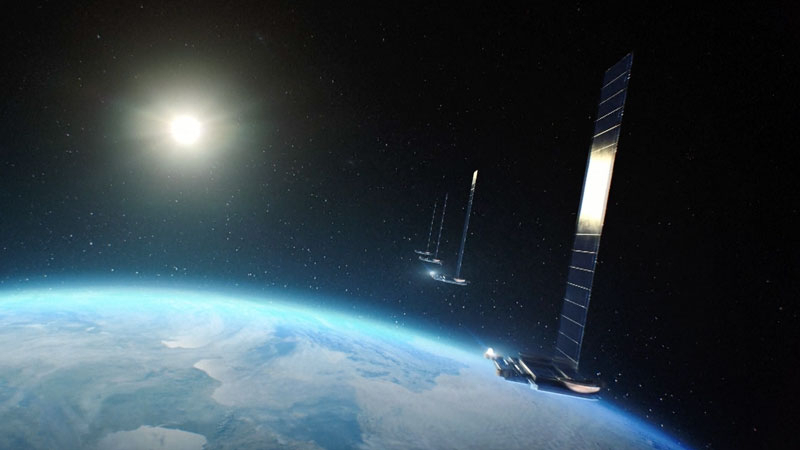A week after news of the transformation of the upper stage of the Long March 6A rocket into a cloud of space debris in orbit, official China responded to the incident. Chinese Foreign Ministry spokesman Lin Jian promised that “necessary measures” would be taken to ensure this does not happen again. Experts will monitor the cloud of debris and collect data to analyze the incident and consequences. Orbit is no place for garbage.

Chinese satellite Internet network Qianfan as imagined by an artist. Image source: CCTV
«The rocket’s mission was the peaceful use of outer space in accordance with international law and universal practice, Lin Jian said in response to questions from reporters. “China has taken the necessary measures and is closely monitoring the relevant orbital area and conducting data analysis.”
The Long March 6A rocket launched the first batch of satellites of the Chinese Starlink network into space on August 6, 2024. All 18 vehicles reached the target orbit. However, the upper stage of the rocket subsequently disintegrated into many fragments. In the first hours, the US Space Command and space debris tracking company discovered at least 300 fragments of the upper stage of the Long March 6A rocket measuring more than 10 cm. Now there, in an orbit at an altitude of 800 km, there is a cloud of at least 700 tracked fragments, and potentially there are at least 900 of them, explained the LeoLabs company.
According to LeoLabs specialists, large fragments show signs of damage characteristic of an explosion of the propulsion system. The company claims that this is a fairly common situation for the upper stage of the Long March 6A rocket. Occasionally, explosions of rocket stages in orbit with the formation of clouds of debris can still be survived, but the planned Qianfan Internet constellation will amount to at least 14 thousand devices by 2030. This would require hundreds of launches and could potentially lead to catastrophic orbital debris if such accidents occur systematically.